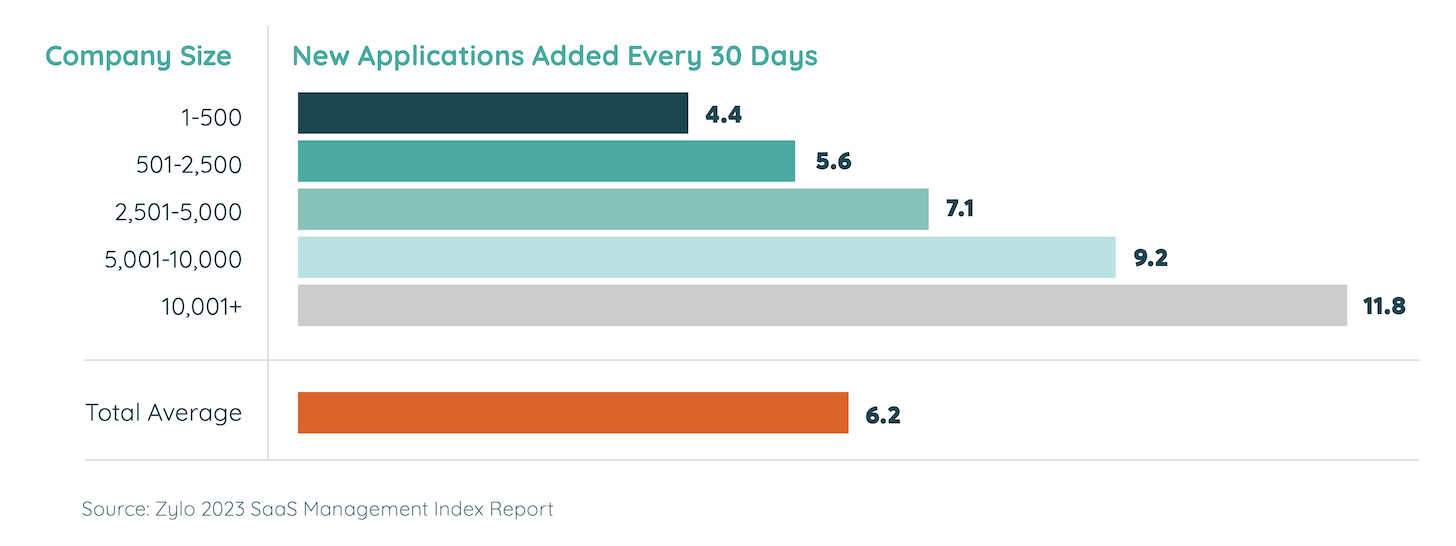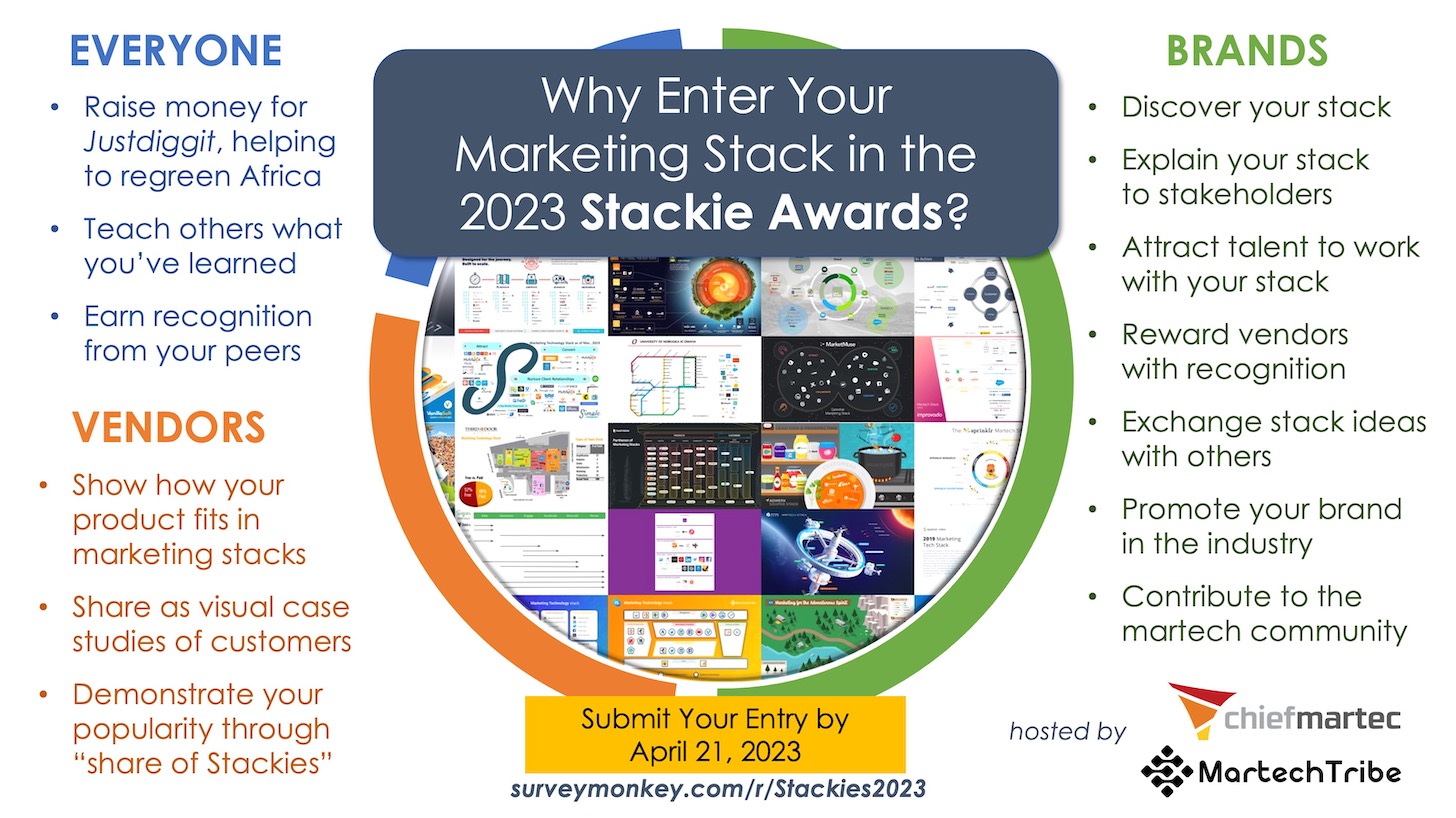[ad_1]
It is springtime, in the Northern hemisphere, and tech stacks are blooming.
Zylo, a SaaS management platform that manages over 30 million SaaS licenses for its consumers — far more than $30 billion in SaaS spend beneath management — just released their 2023 SaaS Management Index report. It shares mixture statistics throughout all of their customers’ SaaS tech stacks.
Importantly, this is not survey details, where by individuals guess how numerous app jellybeans are in their tech stack jellybean jar. (People persistently undervalue the true depend.) This is difficult, empircal information of real SaaS subscriptions. The ground reality. Or, I suppose, the cloud fact.
What does the knowledge expose?
Even in the deal with of app consolidation and budget constraints, SaaS tech stacks are however huge. The common smaller enterprise with 500 or fewer employees has 172 applications. Mid-sector companies between 501 and 2,500 personnel have 255 applications on ordinary. And, as you may assume, it is a lot more than two times that for huge enterprises, an typical of 664 applications.
Nevertheless, the common stack dimensions shrunk about 10% considering the fact that previous year’s report: from 323 applications on average, throughout companies of all sizes, to a slimmer 291.
Zylo can acquire some credit rating for this reduction for their consumers, due to the fact they assistance to identify unused, underutilized, or redundant SaaS applications. In my viewpoint, every firm must have a SaaS administration platform to support with this. (And, no, neither Zylo nor any of their competition have ever paid me or sponsored this web-site or a single of my activities.)
Still while “The Great Rationalization” of tech stack efficiency marches foward, organizations continue on to include new apps. On typical, they add 6.2 every 30 times:

This implies a fair total of churn, with new applications staying extra as previous types are eliminated. With the modern explosion of generative AI — ok, how lots of of you are now expensing a ChatGPT As well as subscription? — we can anticipate there will be rather a parade of AI-driven applications this calendar year to tempt new additions to the stack.
But not all of these applications are important investments. Really, ChatGPT In addition is a very very good illustration of the sort of minimal-expense software that an personnel is probably to pick up on their very own. (Does OpenAI even have an organization-large obtaining option for ChatGPT Plus however?)
Zylo sheds some mild on this by sharing info on who is having to pay for all these apps:

On normal, IT pays for 31% of SaaS spend in the tech stack — and only 18% of the applications. Since their share of shell out is 72% far more than their share of the range of apps, the sensible summary is that IT usually pays for the most costly subscriptions. Possibly greater platforms, these kinds of as cloud information warehouses (storage administration commit is up 87.9% this 12 months), or apps with quite wide adoption across the business enterprise.
The most significant portion of the spend (63%) as nicely as the amount of app subscriptions (45%) are paid out for by organization models on their own. Marketing is likely paying for most of its martech apps. This is the democratization of software that we have been witnessing for the past two many years: every single department has duty of a good chunk of the engineering it precisely demands to complete its do the job. This is not shadow IT.
Shadow IT, to the degree the expression is continue to utilized, is now mainly about individual staff members acquiring software on their own.
Zylo reveals some appealing data in this article too. Person workforce expensing their own SaaS subscriptions account for a reasonably small proportion of spend: a mere 6%. But all those independently procured subscriptions increase up to 37% of the full number of apps.
This tends to make sense though. Most of these specific subscriptions are probably for smaller sized equipment, every only adopted by a couple folks for localized wants. How numerous people in promoting have to have a subscription to a tool like Riverside or StreamYard for recording an official podcast? Not many. But add up all those particular person use scenarios across a lot of people, and the complete application depend promptly rises.
I actually feel many of these are genuine eventualities for “shadow IT”. Are they even in the shadows if they’re now getting tracked by instruments such as Zylo? They are additional “personal IT.”
Really do not get me erroneous, fantastic governance, info and privateness compliance, cybersecurity, etcetera., are all really great explanations for even this sort of personalized IT applications to be vetted by and seen to a company’s technological innovation management team. But individuals spending for their have occupation-unique productivity instruments seems really affordable for me — yet again, as extended as the applicable compliances are fulfilled.
That mentioned, there are surely significantly less legitimate examples. When each individual diverse group within a firm has their personal preferred venture administration tool — Airtable, Asana, ClickUp, Monday, Idea, Trello, Wrike, and so forth. — then cross-workforce collaboration rapidly will become the SaaS Tower of Babel. Convergence and consolidation of this sort of resources goes a long way in direction of improving upon general productiveness. Not to mention chopping down on redundant SaaS subscriptions.
Is that the oversimplified rubric we should really use? If an individual SaaS membership boosts a company’s general internet peformance, productivity, and earnings, then that is a gain. Preserve it. If it’s a drag on people metrics, when deemed holistically, then it really should be consolidated under formal organization unit or IT manage to make improvements to its effect — or cancelled.
After all, just about every cancelled app makes space for new types that are absolutely coming down the river.
P.S. Speaking of tech stacks, you however have 3 more months to enter your martech stack slide into The Stackies. We’re donating $100 for each individual stack submitted to an great cause for the world. And then we’ll see you for the awards ceremony at our digital party, the Greatest of Breed Advertising Summit, on Might 2, #MartechDay.

[ad_2]
Resource hyperlink



![The Ultimate Guide to Content That Works [2023]](https://wildfireconcepts.com/wp-content/uploads/2022/09/blogging-that-works-440x264.jpg)





